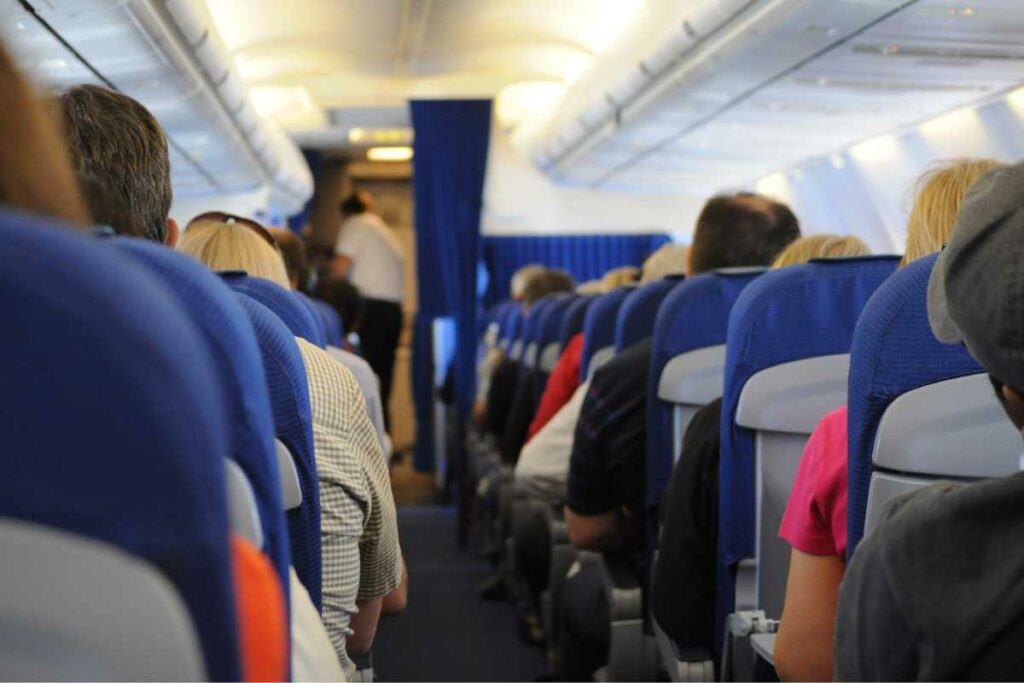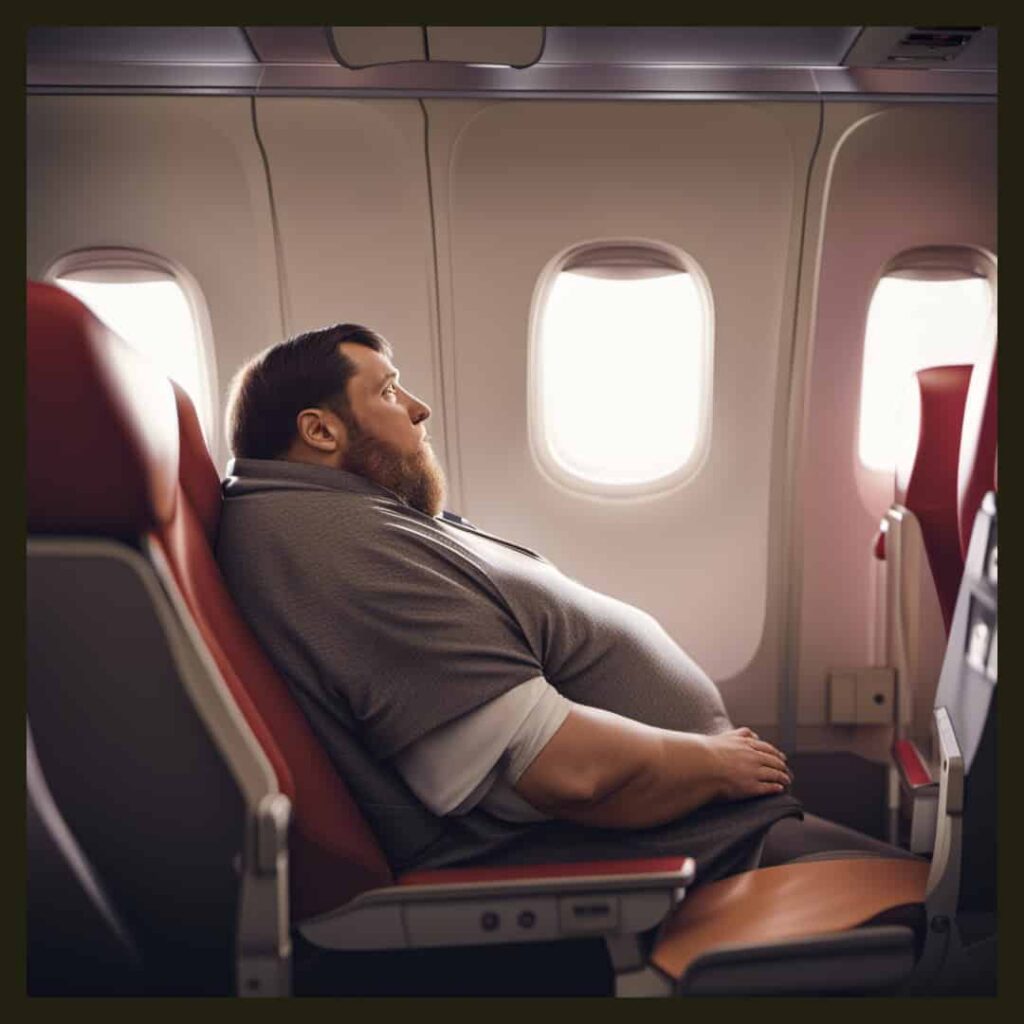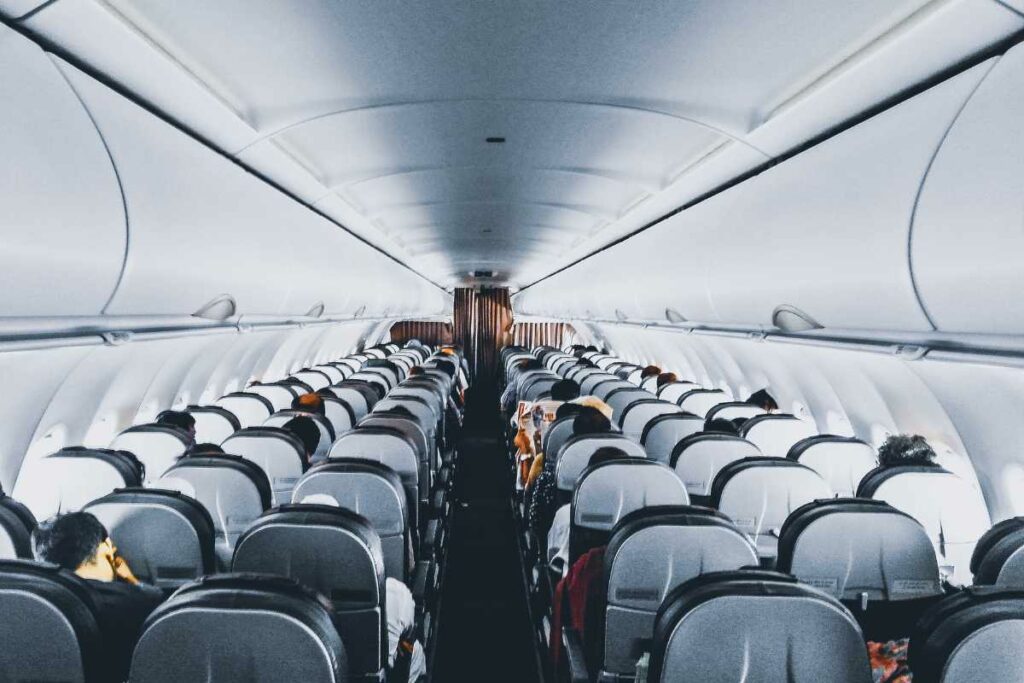As air travel continues to evolve, the topic of airlines weighing passengers has become a point of discussion. This is due to concerns about aircraft safety limits and weight distribution.
It is not a common practice for airlines to weigh individual passengers at the check-in desk.
Certain airlines have opted to weigh passengers in specific circumstances to better understand the average weight of their clientele.
It is essential to recognize that each airline follows a unique set of guidelines and regulations laid out by their respective governing bodies.
Key Takeaways
- Airlines might weigh passengers to ensure aircraft safety and accurate weight distribution
- Weighing passengers is not a common practice, and each airline has its own guidelines
- Regulatory authorities determine how airlines manage weight distribution on flights
Why Airlines Weigh Passengers

Safety Reasons
Airlines weigh passengers to ensure the safety and proper operation of their aircraft. Proper weight distribution is crucial for maintaining balance during takeoff and landing, as well as in-flight stability.
If an aircraft’s weight and balance are not within acceptable limits, it can lead to serious issues such as insufficient power for takeoff or loss of control.
Thus, passenger weights play a significant role in maintaining safety during air travel.
Searching for hotel bargains? Explore booking.com for the latest deals this month.
Fuel Efficiency
Accurate estimation of passenger weights helps airlines with their fuel efficiency efforts.
When airlines know the total weight of passengers and baggage on board, they can better calculate the amount of fuel needed for the journey.
This information allows airlines to reduce fuel consumption, which benefits both the environment and the company’s bottom line.
Proper aircraft weight management can also help extend the lifespan of their fleet by minimizing wear and tear on the planes.
Federal Aviation Administration (FAA) regulates the average weight of passengers and luggage using statistical methods.
However, airlines may occasionally weigh passengers to update their weight estimates and to comply with safety regulations.

How Airlines Weigh Passengers
Traditional Weighing Methods
In some cases, airlines have used scales to measure passengers’ actual weights with their hand luggage.
This can happen during check-in or boarding, ensuring accurate weight distribution across the flight.
Survey Based Estimation
Airlines also use standardized average weights based on gender and season.
For example, adult males weigh up to 185 pounds during summer, while adult females’ weights vary up to 170 pounds in summer and 175 pounds in winter.
To maintain accuracy, regulatory authorities may require airlines to conduct periodic surveys.
A random selection of passengers is weighed, updating the average weights used for aircraft weight calculation.
Remember that weighing processes are primarily for safety reasons and making sure your flight runs smoothly.
Always bear in mind that weight data is also vital for fuel consumption and overall flight efficiency.
Legal and Regulatory Framework
FAA Guidelines
In the United States, the Federal Aviation Administration (FAA) regulates airline operations.
They provide an advisory circular that allows airlines to weigh passengers for accurate weight distribution. Your airline may follow weight and balance programs under FAA oversight.
EASA Policies
For international flights, the European Union Aviation Safety Agency (EASA) plays a similar role in the airline industry.
While specific mandates may vary, guidelines set by EASA ensure safety and efficiency for carriers operating in Europe.
It’s essential for you to comply with any applicable weight-related policies when flying internationally.
Public Perception and Privacy Concerns
Concerns About Privacy
You may have heard reports from sources like the New York Post suggesting that airlines might start weighing passengers.
This raises valid concerns about privacy. Many fear that weighing passengers could lead to a considerable backlash, as it is seen as an invasion of their personal space and potentially embarrassing.
Obesity and Weight Stigma
With obesity rates on the rise among Americans, weight stigma has become an increasingly sensitive issue.
When privacy is compromised, people affected by obesity may feel even more stigmatized.
Airlines need to carefully consider the impact of any policy changes on public perception and how they could exacerbate existing prejudices surrounding weight.
Balancing safety requirements and people’s concerns will be a challenging task for airlines. While accurate weight data is essential for flight safety, it’s essential to maintain passengers’ dignity and privacy.
How airlines choose to address this issue will be crucial in maintaining public trust and avoiding negative public reactions.
Airlines Weighing Passengers: Case Studies

Air New Zealand’s Approach
Air New Zealand had an instance where they requested passengers to step on the scales before boarding.
This measure was taken to ensure accurate weight and balance calculations for their aircraft.
U.S. Airlines: Delta and JetBlue
Data from the National Health and Nutrition Examination Survey indicates that air travelers’ average weight has increased.
This has led to speculations about U.S. airlines, like Delta and JetBlue, potentially weighing passengers in the future to maintain safe weight distribution on flights.
Alaska Airlines: The Anonymous Weigh-in
Alaska Airlines has implemented an anonymous weigh-in process for passengers.
This method helps obtain necessary weight information while ensuring customer privacy and comfort.
Check out this YouTube video on Airlines weighing passengers.
Future Trends and Considerations
Impact of Covid and Remote Work
The Covid pandemic has led to significant changes in the airline industry.
With the rise of remote work, fewer people are boarding flights for business trips, potentially affecting airlines’ weight calculations.
Baggage Weight Considerations
As airlines adjust their operations, the weight of carry-on bags and checked baggage must be taken into account.
The amount of clothing and other items you pack can impact airlines’ luggage weight allowances and overall calculations for safe takeoff and landing.
Land and Takeoff Calculations
Airlines are continually updating their methods for calculating the optimum weight of the aircraft for safe land and tail clearance during takeoff.
By adopting new technology and modernizing their practices, airlines can ensure they maintain a safe weight while accommodating passengers, their baggage, and possible changes in travel patterns due to remote work.
Frequently Asked Questions

How is passenger weight accounted for on flights?
Passenger weight is accounted for by using average weight estimates or occasionally weighing passengers directly. This ensures planes maintain a safe weight balance.
What is the FAA’s standard procedure for estimating passenger weight?
The FAA provides airlines options for calculating passenger weight, such as weighing passengers or asking for volunteered weights. These methods help in determining weight distribution on flights.
Are there any policies for overweight passengers on airlines?
Overweight passenger policies vary among airlines, generally requiring additional accommodations or seat purchases for comfort and safety reasons. It depends on individual airline regulations.
What measures are taken by airlines to ensure planes are not overweight?
Airlines follow strict guidelines for luggage and cargo weight. By estimating passenger weights accurately, they maintain a safe weight balance for the aircraft.
Do any airlines have a policy of weighing passengers?
Yes, some airlines, such as Air New Zealand, Finnair, and Hawaiian Air, have asked passengers to be weighed as part of their safety and fuel efficiency measures.
How do airlines distribute passenger weight evenly during flights?
Airlines distribute passenger weight by strategically seating passengers considering weight, size, and balance. This process ensures smooth, stable flight conditions.
You may also like
-
easy Hotel Birmingham England Review (My Stay Experience)
-
Jet Ski Hire Gran Canaria (Advice & Tips)
-
Afrikat: All-inclusive Luxury Catamaran in Gran Canaria Spain
-
Caybeach Princess, Gran Canaria: Your Pre-Booking Guide
-
Flying Virgin Atlantic: Do They Provide Headphones?
-
Best Places To Watch A Rocket Launch At Cape Canaveral 2024
-
Ulanzi U60 RGB Video Light Review
-
What Is Malta Famous For? Malta Local History and Past Events



